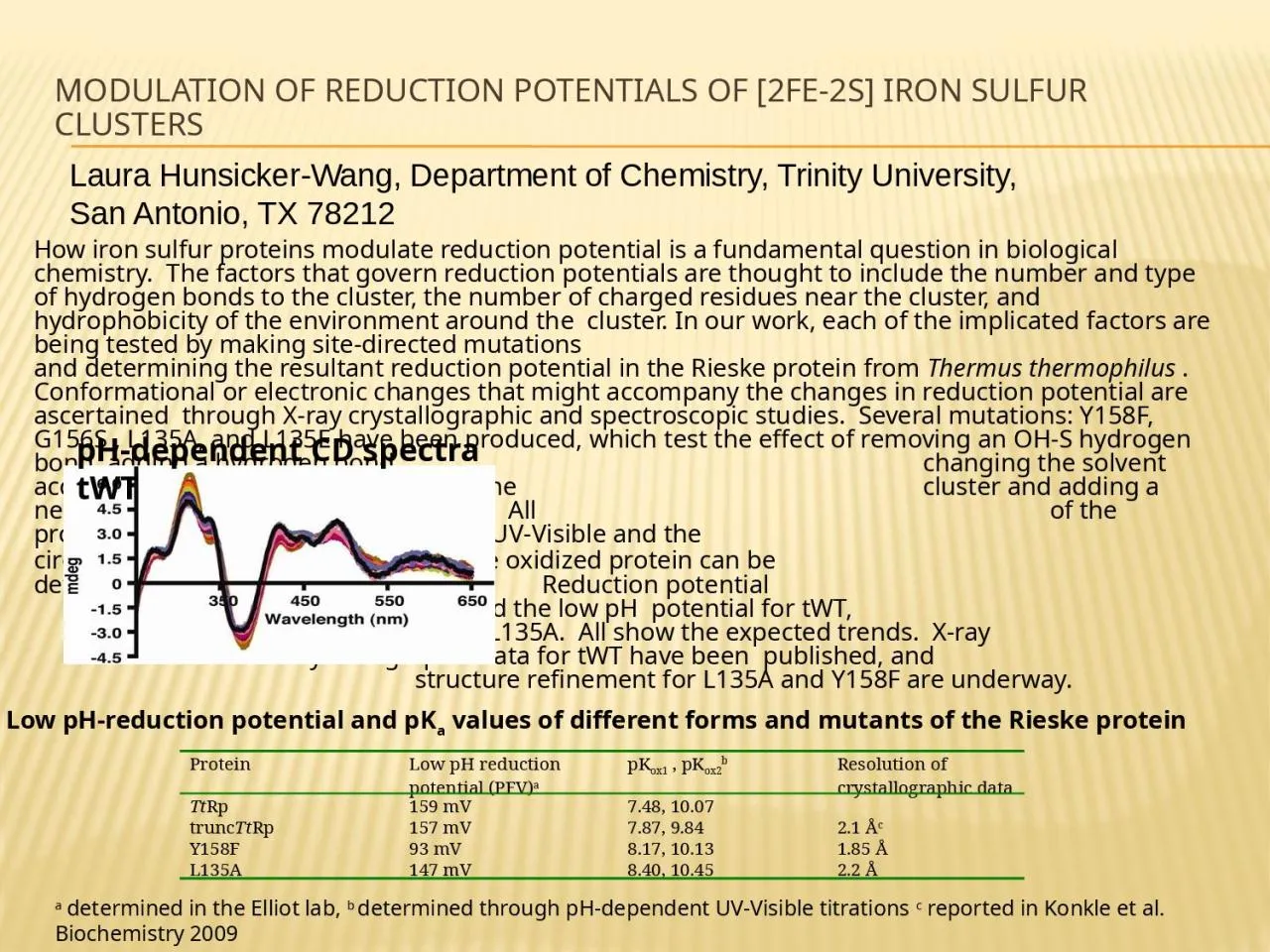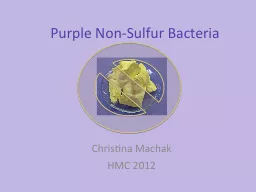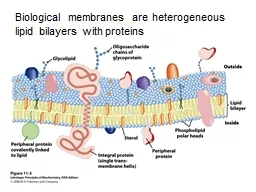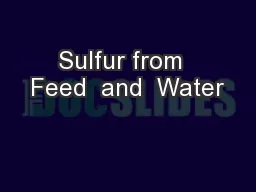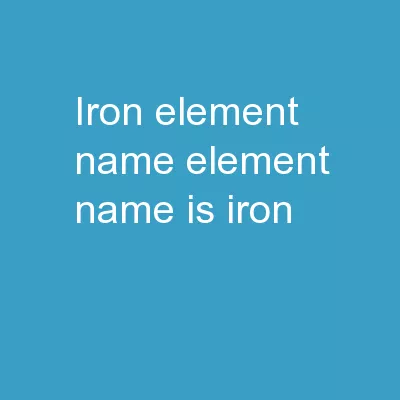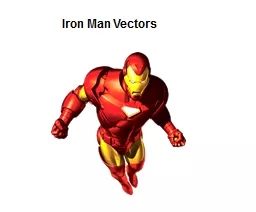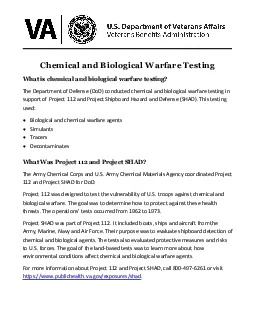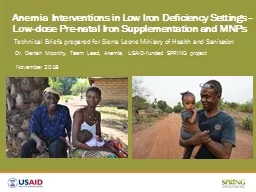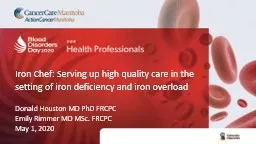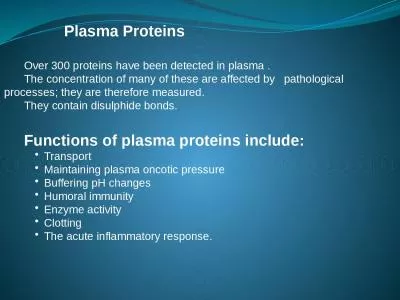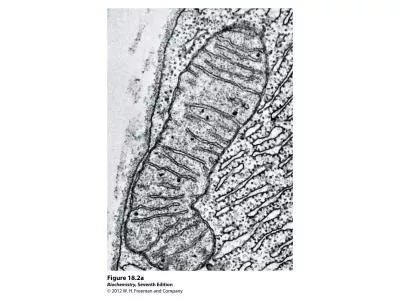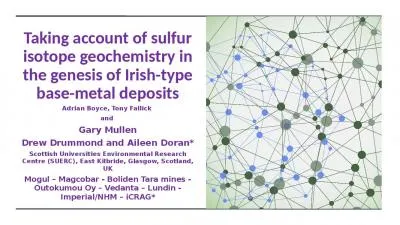PPT-How iron sulfur proteins modulate reduction potential is a fundamental question in biological
Author : tremblay | Published Date : 2022-05-31
hydrophobicity of the environment around the cluster In our work each of the implicated factors are being tested by making sitedirected mutations and determining
Presentation Embed Code
Download Presentation
Download Presentation The PPT/PDF document "How iron sulfur proteins modulate reduct..." is the property of its rightful owner. Permission is granted to download and print the materials on this website for personal, non-commercial use only, and to display it on your personal computer provided you do not modify the materials and that you retain all copyright notices contained in the materials. By downloading content from our website, you accept the terms of this agreement.
How iron sulfur proteins modulate reduction potential is a fundamental question in biological: Transcript
Download Rules Of Document
"How iron sulfur proteins modulate reduction potential is a fundamental question in biological"The content belongs to its owner. You may download and print it for personal use, without modification, and keep all copyright notices. By downloading, you agree to these terms.
Related Documents

